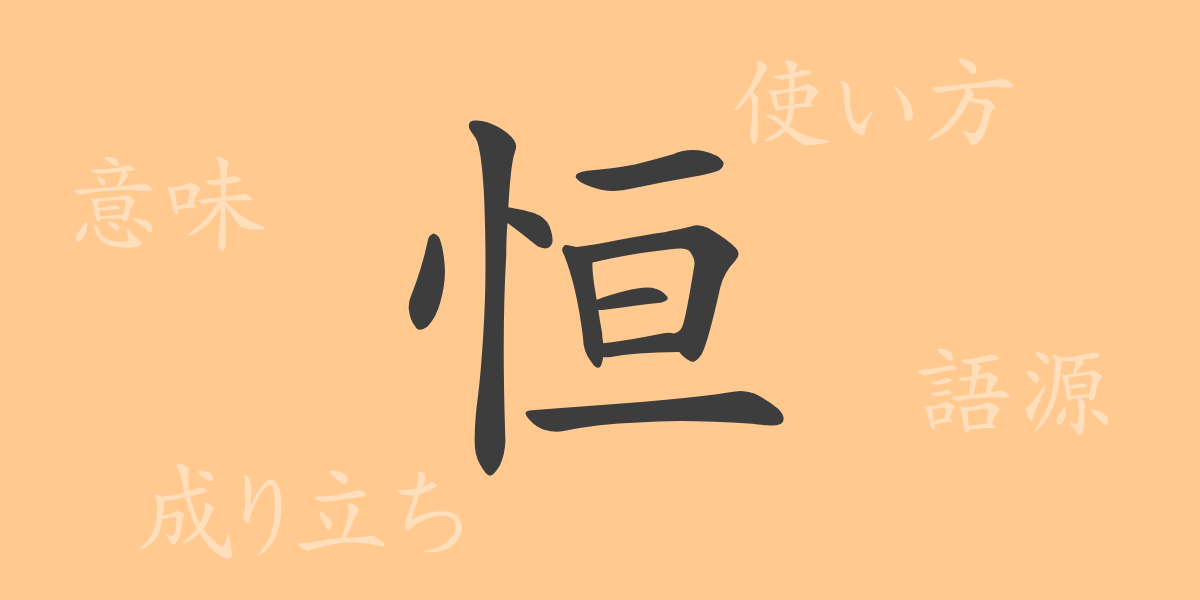The richness of the Japanese language is reflected in the depth and beauty of its kanji characters. This time, we focus on the common kanji “恒(つね)” and explore its charm. Through this article, we will reveal everything from the origin of “恒(つね)” to its modern usage, as well as the idioms and proverbs that include this character.
Origin of 恒(つね)
The kanji “恒(つね)” has its roots in ancient Chinese oracle bone script. Originally, it depicted the continuous flow of water in a certain direction. This idea of unchanging flow led to the meaning “constant” or “unchanging.” Over time, this character became a symbol of stability and permanence and was incorporated into the Japanese language.
Meaning and Usage of 恒(つね)
“恒(つね)” means unchanging, constant, or always the same. It is generally used to indicate stability and persistence. It can also refer to laws or regulations that do not change. This kanji plays an important role in Japanese expressions, being used as an adjective, noun, and adverb in various contexts.
Reading, Stroke Count, and Radical of 恒(つね)
Understanding the reading and structure of the kanji “恒(つね)” is essential.
- Reading: The on-yomi (Chinese reading) is “コウ,” and the kun-yomi (Japanese reading) is “つね.”
- Stroke Count: “恒(つね)” has a total of 9 strokes.
- Radical: The radical is “心” (こころへん, or shinnyou).
Idioms, Phrases, and Proverbs Using 恒(つね)
Idioms, phrases, and proverbs that include “恒(つね)” reflect the character’s meaning.
For example, “恒常的(こうじょうてき)” means “always constant,” “恒例(こうれい)” means “regular occurrence,” and “恒心(こうしん)” means “a constant and unwavering heart.” These expressions are used in business and daily life to emphasize stability and continuity.
Conclusion on 恒(つね)
The kanji “恒(つね)” is a simple yet profound character. It plays an essential role in Japanese by indicating stability and continuity and is used in various idioms and expressions. We hope this article helps you understand the charm and usage of “恒(つね).” Remember to appreciate the presence of “恒(つね)” as you deepen your study of the Japanese language.

























